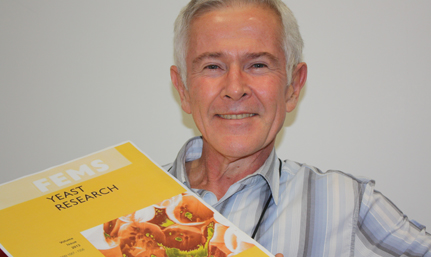Latest News Archive
Please select Category, Year, and then Month to display items
19 November 2018
|
Story Valentino Ndaba
|
Photo Xolisa Mnukwa
 “I’m an embodiment of the dreams of those whose lives have been marked by great struggles,and I want to propel and re-write the African child’s narrative.” - Priscilla Brandt
“I’m an embodiment of the dreams of those whose lives have been marked by great struggles,and I want to propel and re-write the African child’s narrative.” - Priscilla Brandt
Priscilla Brandt, first-generation LLB graduate, saw the opportunity to upgrade her career through the Graca Machel Trust, and grabbed the bull by its horns. Brandt pitched her skills and expertise to one of the trust CEO’s who happened to be part of a GLS panel discussion which was held on the University of the Free State (UFS) Bloemfontein Campus. Shortly afterwards, the organisation contacted her with an offer for a Legal and Governance research internship.
The Graca Machel Trust is an established Pan-African organisation that focuses on child health and nutrition, education, women’s economic and financial empowerment, leadership, and good governance. The trust functions under the leadership of Graca Machel, who is one of the world’s leading advocates for the rights of women and children and has stood as a social justice and political activist for years.
Brandt said her journey started in the township streets of Galeshewe, Kimberley, and was characterised by infinite difficulties and resolute challenges. However, her circumstances in no way deterred her from standing fervently in her trust and pursuit of a full and purpose-driven life.
According to Brandt, her university career involved working at several odd jobs concurrently in order to help take care of her family and to financially maintain herself throughout her varsity years. Despite her adverse circumstances, she managed to collect a vast array of domestic and international academic achievements.
She was the first female chairperson of the Black Lawyers Association Student Chapter at the UFS, served on the UFS F1 Leadership for Change programme, and represented the university in Japan. In addition to that, she formed part of a work and study-abroad programme in America for three months. She was a delegate to the International Youth Leadership Conference in the Czech Republic and was selected by the office of the Commonwealth Secretary General for the 33Sixty Conference in Singapore. Furthermore, she was nominated by the UK Humanitarian Affairs organisation to be part of the eighth University Scholars Leadership Symposium at the United Nations in Thailand.
Her knowledge and belief in her capabilities and work ethic drives Brandt to constantly challenge herself and strive for a life and character that embodies excellence.
Link between champagne bubbles and the UFS?
2012-11-16
 |
|
Prof. Lodewyk Kock with an example of a front page of the publication FEMS Yeast Research, as adapted by F. Belliard, FEMS Central Office.
Photo: Leatitia Pienaar
15 November 2012
|
What is the link between the bubbles in champagne and breakthrough research being done at the Mayo Clinic in America? Nano research being done at our university.
Prof. Lodewyk Kock of Biotechnology says a human being consists of millions of minute cells that are invisible to the eye. The nano technology team at the UFS have developed a technique that allows researchers to look into such a cell, as well as other microorganisms. In this way, they can get an idea of what the cell’s “insides” look like.
The UFS team – consisting of Profs. Kock, Hendrik Swart (Physics), Pieter van Wyk (Centre for Microscopy), as well as Dr Chantel Swart (Biotechnology), Dr Carlien Pohl (Biotechnology) and Liza Coetsee (Physics) – were amazed to see that the inside of cells consist of a maze of small tunnels or blisters. Each tunnel is about 100 and more nanometres in diameter – about one ten thousandth of a millimetre – that weaves through the cells in a maze.
It was also found that these tunnels are the “lungs” of the cells. Academics doing research on yeast have had to sit up and take notice of the research being done at the UFS – to the extent that these “lungs” will appear on the front page of the highly acclaimed FEMS Yeast Research for all of 2013.
The Mayo Clinic, in particular, now wants to work with the UFS to study cancer cells in more detail in order to fight this disease, says Prof. Kock. The National Cancer Institute of America has also shown interest. This new nano technology for biology can assist in the study and development of nano medicine that can be used in the treatment of cancer and other life threatening diseases. Nano medicine uses nano metal participles that are up to one billionth of a metre in size.
Prof. Kock says laboratory tests indicate that nano medicine can improve the efficacy of anti-cancer medicine, which makes the treatment less toxic. “According to the Mayo Clinic team, nano particles are considered as a gold cartridge which is being fired directly at a cancer tumour. This is compared to fine shot that spreads through the body and also attacks healthy cells.”
“This accuracy implies that the chemotherapy dose can be lowered with fewer side effects. The Mayo Clinic found that one-tenth of the normal dosage is more effective against pancreas cancer in this way than the full dosage with a linkage to nano particles. According to the clinic, this nano medicine could also delay the spread of cancer,” says Prof. Kock.
The nano particles are used as messengers that convey anti-cancer treatment to cancer cells, where it then selectively kills the cancer cells. The transport and transfer of these medicines with regard to gold nano particles can be traced with the UFS’s nano technology to collect more information, especially where it works on the cell.
“With the new nano technology of the UFS, it is possible to do nano surgery on the cells by slicing the cells in nanometre thin slices while the working of the nano medicine is studied. In this way, it can be established if the nano medicine penetrates the cells or if it is only associated with the tiny tunnels,” says Prof. Kock.
And in champagne the small “lungs” are responsible for the bubbles. The same applies to beer and with this discovery a whole new reach field opens for scientists.